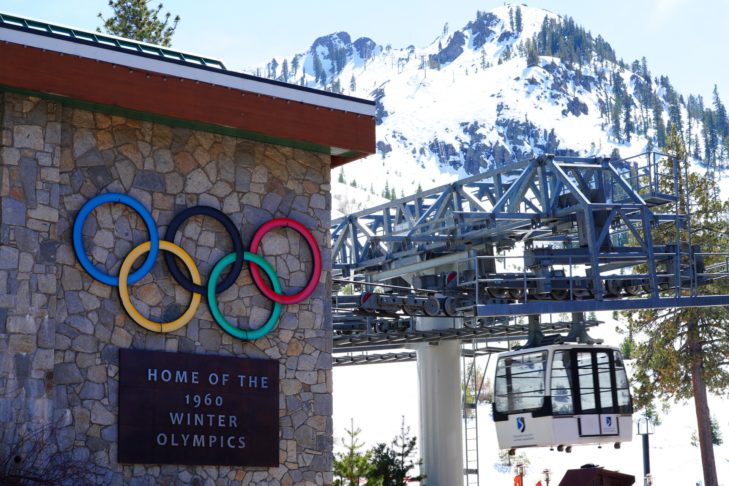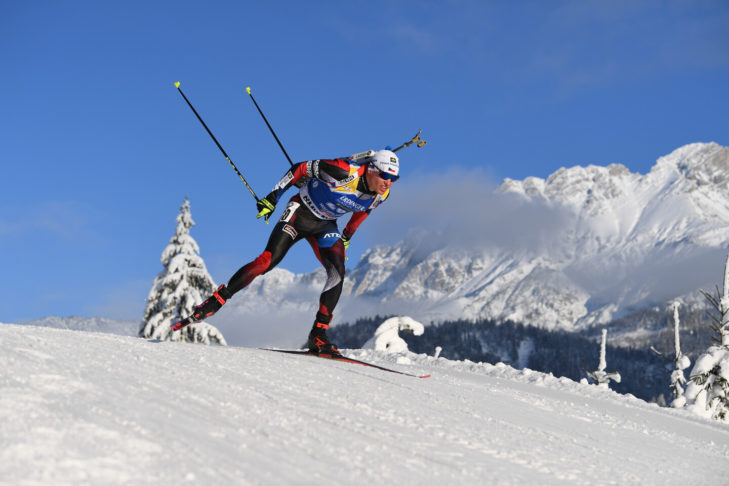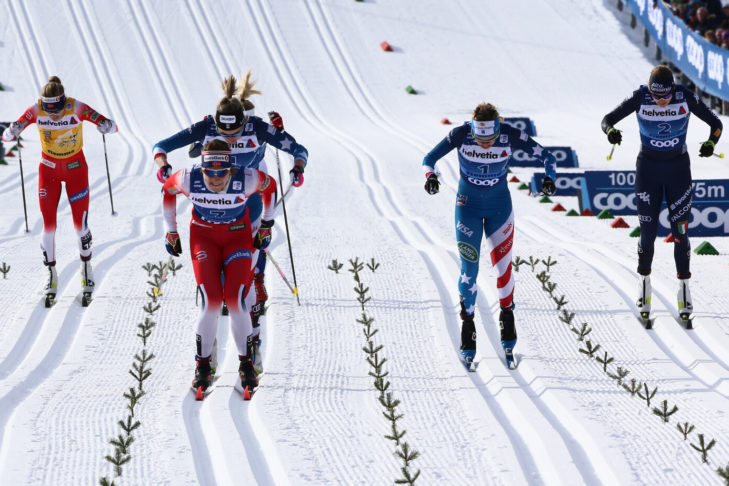The Winter Olympics take place every four years. Athletes compete in seven sports and 15 disciplines at the Winter Olympics, competing for the Olympic medals of gold, silver and bronze. In the article below, SnowTrex presents the sports and disciplines of the Winter Olympics and offers an overview of all previous venues.
Venues of the Winter Olympics
The Winter Olympics were first held in the French ski resort of Chamonix in 1924, but were only subsequently recognised in 1926. This was followed by St. Moritz in Switzerland in 1928. The continuous four-year cycle has only been interrupted twice since then: In 1944, the Games did not take place due to World War 2, and in the 1990s the cycle was adjusted.
Until 1992, the Summer and Winter Olympic Games were held in the same year. After 1992, this was to be changed for commercial reasons and not least because of the demands of television. Therefore, the next Winter Olympics were held in 1994, followed four years later in 1998. To date, the United Kingdom has never hosted the Winter Olympics. Germany was host only in 1936 and 1940 in Garmisch-Partenkirchen. Germany’s planned bid for 2022 in Munich failed due to citizens’ disapproval: in all four referendums in Munich, Garmisch-Partenkirchen and the districts of Traunstein and Berchtesgaden, the population voted narrowly against a bid.
| Year | Town | Country |
|---|---|---|
| 1924 | Chamonix | France |
| 1928 | St. Moritz | Switzerland |
| 1932 | Lake Placid | USA |
| 1936 | Garmisch-Partenkirchen | Germany |
| 1940 | Garmisch-Partenkirchen | Germany |
| 1944 | -- | -- |
| 1948 | St. Moritz | Switzerland |
| 1952 | Oslo | Norway |
| 1956 | Cortina d’Ampezzo | Italy |
| 1960 | Palisades Tahoe (bis 2021 "Squaw Valley Ski Resort") | USA |
| 1964 | Innsbruck | Austria |
| 1968 | Grenoble | France |
| 1972 | Sapporo | Japan |
| 1976 | Innsbruck | Austria |
| 1980 | Lake Placid | USA |
| 1984 | Sarajevo | Bosnia-Herzegovina |
| 1988 | Calgary | Canada |
| 1992 | Albertville | France |
| 1994 | Lillehammer | Norway |
| 1998 | Nagano | Japan |
| 2002 | Salt Lake City | USA |
| 2006 | Turin | Italy |
| 2010 | Vancouver | Canada |
| 2014 | Sochi | Russia |
| 2018 | Pyeongchang | South Korea |
| 2022 | Beijing | China |
| 2026 | Milan and Cortina d’Ampezzo | Italy |
The sports and disciplines of the Winter Olympics
A total of seven sports are contested at the Winter Olympics in 15 different disciplines. A discipline, also referred to as an event, is a single type of competition within a sport. A prerequisite for a winter sport to be recognised as Olympic by the IOC (International Olympic Committee) is the extensive operation of that sport in at least 25 countries and on three continents.
1. Biathlon
The biathlon is cross-country skiing combined with shooting competitions and is contested in individual, mass start, sprint, pursuit and relay events. The biathlon has been an Olympic sport since 1960. Its precursor was the military patrol, which was held as a competition at the first Winter Olympics in Chamonix.
The biathlon competitions at a glance:
| Current competitions | Olympic since (year) | Men/Women |
|---|---|---|
| 15 km single | 1992 | Women |
| 20 km individual | 1960 | Men |
| 12.5 km mass start | 2006 | Women |
| 15 km mass start | 2006 | Men |
| 7.5 km mass start | 1992 | Women |
| 10 km sprint | 1980 | Men |
| 10 km pursuit | 2002 | Women |
| 12,5 km pursuit | 2002 | Men |
| 4 x 6 km relay | 2006 | Women |
| 4 x 7.5 km relay | 1968 | Women/Men |
| 2 x 6 km/ 2 x 7.5 km mixed relay | 2014 | Mix |
2. Bobsleighing
Bobsleighing takes place in a sports sledge in an ice canal.
Bobsleigh
Please also note that by using our services and integrating the YouTube API Services, the YouTube Terms of Service and the YouTube API Services Terms apply and your use of our website is deemed to be acceptance of these terms.
Bobsleigh has been one of the winter sports since the beginning of the Winter Olympics. The only exception was in 1960 in Squaw Valley: due to insufficient participation, the decision was made not to build a bobsleigh track and thereby to omit the competition. The competitions have been held for men in four-man bobsleigh since 1924 and in two-athlete bobs since 1932. Since 2002, women have also been competing in bobsleigh at the Winter Olympics, but only in two-athlete bobs.
| Current competitions | Olympic since (year) | Men/Women |
|---|---|---|
| Four-man bob | 1924 | Men |
| Two-man bob | 1932 | Men |
| Two-man bob | 2002 | Women |
Skeleton
Please also note that by using our services and integrating the YouTube API Services, the YouTube Terms of Service and the YouTube API Services Terms apply and your use of our website is deemed to be acceptance of these terms.
Skeleton was already on the men’s programme in 1928 and 1948 in St. Moritz (Switzerland). After a 54-year break, skeleton returned to the Olympic Games programme in 2002 in Salt Lake City (USA). Since then, skeleton has been a permanent fixture at Winter Games. Since 2002, women have also competed in skeleton.
| Current competitions | Olympic since (year) | Men/Women |
|---|---|---|
| One | 1928 | Men |
| One | 2002 | Men |
3. Curling
Please also note that by using our services and integrating the YouTube API Services, the YouTube Terms of Service and the YouTube API Services Terms apply and your use of our website is deemed to be acceptance of these terms.
Curling, similar to ice stock sport (which itself is also known as Bavarian curling), is a winter sport played on ice in which two teams of four players each try to slide their curling stones on an ice rink closer to the centre of a target circle than their opponents. Curling was already on the programme at the beginning of the Olympic Games, but initially only as a demonstration sport. Since the 1998 Winter Olympics, however, curling for men and women has been an official competition of the Winter Olympics.
| Current competitions | Olympic since (year) | Men/Women |
|---|---|---|
| Team | 1924 resp. 1998 | Men |
| Doubles | 2018 | Mixed |
4. Ice hockey
Ice hockey is a team sport with five field players and a goalkeeper. It is played on an iced surface that is about 60 m long and 30 m wide. The goal is to get the puck, a small hard rubber disc, into the opponent’s goal. Ice hockey has been an Olympic sport for men since the beginning of the Winter Games. Women’s teams have been competing since the 1998 Winter Olympics.
| Current competitions | Olympic since (year) | Men/Women |
|---|---|---|
| Team | 1920 (Summer Games) | Men |
| Team | 1998 | Women |
5. Ice skating
Figure skating
Please also note that by using our services and integrating the YouTube API Services, the YouTube Terms of Service and the YouTube API Services Terms apply and your use of our website is deemed to be acceptance of these terms.
Figure skating was the first Olympic winter sport. But figure skating was already part of the programme at the 1908 Summer Olympics in both men’s and women’s singles and pairs. Jumps, pirouettes and artistic and expressive dance characterise the sport.
| Current competitions | Olympic since (year) | Men/Women |
|---|---|---|
| Single | 1908 (Summer) | Men/Women |
| Pair skating | 1908 (Summer) | Mixed |
| Ice Dance | 1976 | Men/Women |
| Mixed Team | 2014 | Mixed |
Speed skating
Please also note that by using our services and integrating the YouTube API Services, the YouTube Terms of Service and the YouTube API Services Terms apply and your use of our website is deemed to be acceptance of these terms.
Speed skating has been part of the men’s programme since the first Winter Olympics in 1924. Although the women’s competitions were held as a demonstration in 1932, they have only been officially part of the programme since 1960. The track length in classic speed skating is 400 m.
| Current competitions | Olympic since (year) | Men/Women |
|---|---|---|
| 500 m | 1924/1960 | Men/Women |
| 1,000 m | 1960/1976 | Men/Women |
| 1,500 m | 1924/1960 | Men/Women |
| 3,000 m | 1960 | Women |
| 5,000 m | 1924/1988 | Men/Women |
| 10,000 m | 1924 | Men |
| Team pursuit | 2006 | Men/Women |
| Mass start | 2018 | Men/Women |
6. Luge
Please also note that by using our services and integrating the YouTube API Services, the YouTube Terms of Service and the YouTube API Services Terms apply and your use of our website is deemed to be acceptance of these terms.
Luge involves sledging on an artificial ice track while lying on your back. It has been part of the programme of the Olympic Winter Games since 1964. Since 2014, there has been a fourth competition, the team relay. Although the regulations allow women in the double-seater, only men have competed in this event at the Olympic Games so far.
| Current competitions | Olympic since (year) | Men/Women |
|---|---|---|
| Single seater | 1964 | Men/Women |
| Double seater | 1964 | Men |
| Team relay | 2014 | Mixed |
7. Skiing
The collective term skiing covers the various skiing and snowboarding disciplines. In addition to all snowboarding disciplines, freestyle skiing, alpine skiing and Nordic skiing disciplines such as cross-country skiing and ski jumping are also included. Incidentally, there was a demonstration competition for ski ballet in 1988 and 1992.
Freestyle Skiing
Freestyle skiing is divided into different disciplines. On the halfpipe, in jumping and slopestyle, performance is assessed by a jury awarding points; in skicross and moguls, a winner is determined by direct comparison in head-to-head races.
At the 1988 Olympic Games, three competitions – moguls, jumping and ballet – were held as demonstrations. Moguls first became an official Olympic discipline in 1992. In 1994 freestyle jumping became an official discipline, and in 2010 a third competition, skicross, was added. Since 2014, two more disciplines, slopestyle and halfpipe, have been held at the Winter Olympics.
| Current competitions | Olympic since (year) | Men/Women |
|---|---|---|
| Mogul slope | 1992 | Men/Women |
| Halfpipe | 2014 | Men/Women |
| Skicross | 2010 | Men/Women |
| Slopestyle | 2014 | Men/Women |
| Jumping | 1994 | Men/Women |
| Big Air | 2022 | Men/Women |
Alpine Skiing
Please also note that by using our services and integrating the YouTube API Services, the YouTube Terms of Service and the YouTube API Services Terms apply and your use of our website is deemed to be acceptance of these terms.
Alpine skiing has been part of the programme of the Winter Olympics since the 1936 Winter Games (combined) and is held on a course marked out by gates on a ski slope. All gates must be crossed correctly from the start to the finish; the individual time at the finish is scored. The athletes compete in five different disciplines. Since 1948, slalom and downhill have been part of the Olympics alongside the combined event; giant slalom was added four years later. Since 2018 there has also been a mixed team competition.
| Current competitions | Olympic since (year) | Men/Women |
|---|---|---|
| Downhill | 1948 | Men/Women |
| Combination | 1936 | Men/Women |
| Giant Slalom | 1952 | Men/Women |
| Slalom | 1948 | Men/Women |
| Super-G | 1988 | Men/Women |
| Team competition | 2018 | Mixed |
Nordic skiing
Nordic skiing includes cross-country skiing and ski jumping, as well as the combination of the two, the Nordic combined.
Cross-country skiing
Cross-country skiing has been part of the Winter Olympics programme since the first Winter Olympics in 1924. However, the women’s competitions have only been part of the Winter Olympics since 1952. Of the current 12 disciplines, the men’s 50 km has taken place at all Winter Olympics to date.
| Current competitions | Olympic since (year) | Men/Women |
|---|---|---|
| Individual sprint | 2002 | Men/Women |
| Team sprint | 2006 | Men/Women |
| 10 km | 1952/1992 | Men/Women |
| 15 km | 1956/1992 | Men/Women |
| 30 km | 1956/1992 | Men/Women |
| 50 km | 1924 | Men |
| 15 km skiathlon | 2006 | Women |
| 30 km skiathlon | 2006 | Men |
| 4 x 5 km relay | 1976 | Women |
| 4 x 10 km relay | 1936 | Men |
Nordic combined
Please also note that by using our services and integrating the YouTube API Services, the YouTube Terms of Service and the YouTube API Services Terms apply and your use of our website is deemed to be acceptance of these terms.
Nordic combined is a competition consisting of ski jumping and cross-country skiing. Today, the competition is started as a pursuit race according to the Gundersen method based on the jump distances at different time intervals, so that the first athlete at the finish is the winner. The Nordic Combined has been part of the programme of the Olympics since the 1924 Winter Games in Chamonix, but back then it was in the individual/normal hill competition with 18 km of cross-country skiing (15 km from 1956 on). In this competition, the cross-country skiing was held before the jumping and the points achieved were added together. For a time, from 1988 to 2006, there was still jumping on the large hill with a 7.5 km sprint. Nordic combined is only a men’s competition so far.
| Current competitions | Olympic since (year) | Men/Women |
|---|---|---|
| Large hill 10 km Gundersen | 2010 | Men |
| Normal hill 10 km Gundersen | 2010 | Men |
| Team -- Large hill 4 × 5 km relay | 2006 | Men |
Ski jumping
Please also note that by using our services and integrating the YouTube API Services, the YouTube Terms of Service and the YouTube API Services Terms apply and your use of our website is deemed to be acceptance of these terms.
Ski jumping has been consistently part of the Olympics since the first Winter Olympics in 1924. The athletes jump off from a platform onto a ski jumping hill and try to jump as far as possible. In addition to the distance, the flight position and the elegance of the (telemark) landing are also taken into account for the scoring.
| Current competitions | Olympic since (year) | Men/Women |
|---|---|---|
| Normal hill | 1924/2014 | Men/Women |
| Large hill | 1964 | Men |
| Large hill team | 1988 | Men |
Snowboarding
Please also note that by using our services and integrating the YouTube API Services, the YouTube Terms of Service and the YouTube API Services Terms apply and your use of our website is deemed to be acceptance of these terms.
Snowboarding is still a very young Olympic sport. Snowboarding was only included in the programme of the Winter Olympics in 1998. There are also various disciplines in snowboarding, five of which are currently Olympic.
| Current competitions | Olympic since (year) | Men/Women |
|---|---|---|
| Halfpipe | 1998 | Men/Women |
| Parallel Giant Slalom | 2002 | Men/Women |
| Slopestyle | 2014 | Men/Women |
| Snowboardcross | 2006 | Men/Women |
| Big Air | 2018 | Men/Women |





